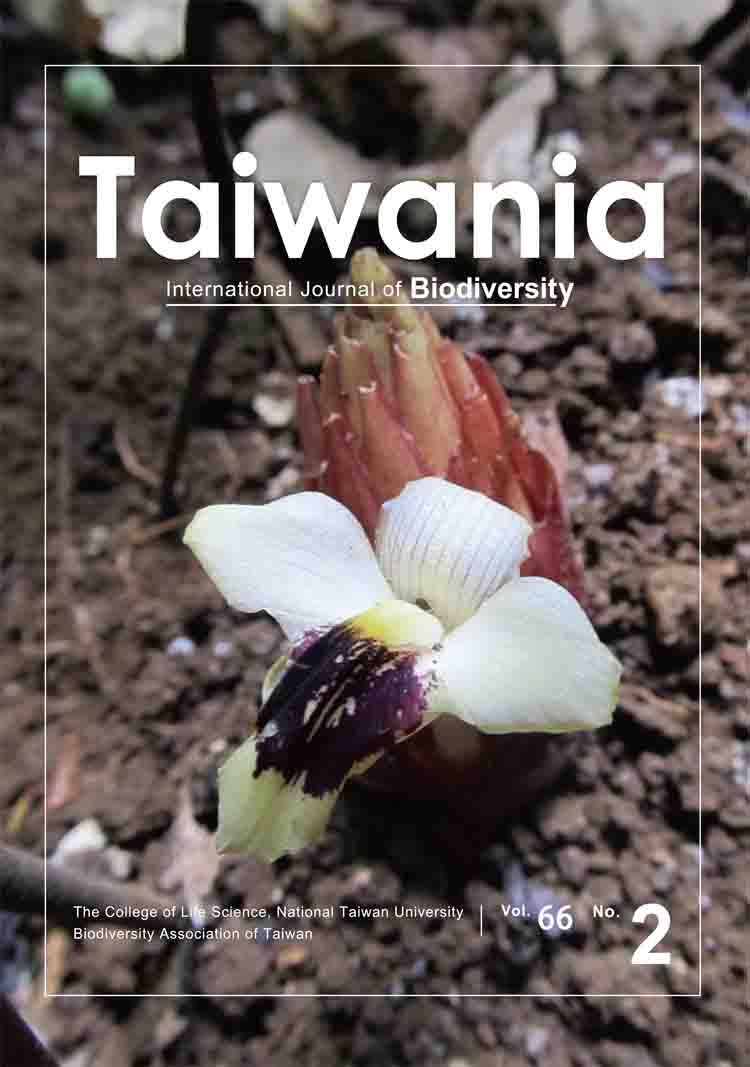Research Paper
Poa liuliangii and P. kengii (Poaceae), two new species from the Hengduan Mountains of southwest China
Marina Vladimirovna Olonova, Steven P. Sylvester
Published on: 17 May 2021
Page: 251 - 257
DOI: 10.6165/tai.2021.66.251
Abstract
Two new species, Poa liuliangii and P. kengii, from the Hengduan Mountains (Sichuan province of southwest China) are described and illustrated. Detailed description and comparison tables are also provided. Poa liuliangii is similar to P. incerta and P. orinosa of the Poa versicolor aggregate (in accordance with a monotypic species concept), but differs from them in its more mesomorphic appearance (broader panicles, broader leaf blades, flag leaf blades longer than sheathes or equal) and pubescent rachillas. Poa kengii is similar to P. sphondylodes and P. faberi, but differs from them in its shorter ligules and glabrous lemma calluses.
Keyword: Alpine flora, Hengduanshan, Pooideae, Sichuan province, taxonomy
Literature Cited
Boufford, D.E. 2014. Biodiversity Hotspot: China’s Hengduan Mountains. Arnoldia 72(1): 24–35.
Chen, Y.S. 2019. A Preliminary Catalogue of Vascular Plants in the Pan-Himalaya. Science Press, Beijing, Cambridge. 372 pp.
Clayton, W.D. and S.A. Renvoize. 1999. Genera Graminum: Grasses of the World. Kew Publishing, Kew. 389 p.
Hughes, C.E. and G.W. Atchinson. 2015. The ubiquity of alpine plant radiations: From the Andes to the Hengduan Mountains. New Phytol. 207(2): 275–282.
DOI: 10.1111/nph.13230View Article
Google Scholar
Keng, Y.L. 1959. Flora illustralis plantarum sinicarum. Keng Yi-Li ed., Peking. 1181 pp.
Kitagawa, M. 1979. Neo-Lineamenta Florae Manshuricae, or Enumeration of the Spontaneous Vascular Plants Hitherto Known from Manchuria (Flora et vegetatio mundi). J. Cramer, Vaduz.
Liu, L. 2003. Poa L. In: Flora Sinica 9(2): 388–405.
Melderis, A. 1949. Poa sphondylodes Trin. In: Norlindh, T. Flora of the Mongolian steppe and desert ?reas. 1: 95–100.
Olonova, M.V., S. Miehe, N.S. Mezina and A.S. Erst. 2014. Fitting the Morphological Diversity of Poa sect. Stenopoa into taxonomic framework. Biosci., Biotechnol. Res. Asia 11(Spl. Edn. 2): 225–231.
DOI: 10.13005/bbra/1467View Article
Google Scholar
Forbes, F.B. and W.B. Hemsly. 1904. An Enumeration of all the plants known from China proper, Formosa, Hainan, the Corea, the Luchu Archipelago and the island of Hongkong, together with their distribution and synonymy. J. Linn. Soc. Bot. 36(254): 377–456.
DOI: 10.1111/j.1095-8339.1904.tb00654.xView Article
Google Scholar
Serebryakova, T.I. 1965. Tillering and living forms of some bluegrasses (Poa L.) in accordance with their evolution. Botanical Journal 50(11): 1536–1556.
Stebbins, G.L. 1941. Apomixis in the angiosperms. Bot. Rev. 7(10): 507–542.
DOI: 10.1007/BF02872410View Article
Google Scholar
TROPICOS, 2020. Tropicos.org. Missouri Botanical Garden. Saint Louis, USA.http://mobot.mobot.org/W3T/Search/nwgc.html.
Tzvelev, N.N. 1976. Grasses of the USSR. Nauka, Moscow–Leningrad. 788 pp.
Tzvelev, N.N. 2001. Poa. In: Grubov, V. I. (Ed.) Plants of Central Asia, Plant collections from China and Mongolia 4: 156–177.
Tzvelev, N.N. and N.S. Probatova. 2019. Grasses of Russia. KMK Scientific Press, Moscow. 646 pp.
Wu, Z. Y. 1988. Hengduan mountain flora and her significance. J. Jpn. Bot. 63: 297–311.
Xu, J. and A. Wilkes. 2004. Biodiversity impact analysis in northwest Yunnan, southwest China. Biodivers. Conserv. 13(5): 959–983.
DOI: 10.1023/B:BIOC.0000014464.80847.02View Article
Google Scholar
Zhu, G.H., L. Liu, R.J. Soreng and M. V. Olonova. 2006. Poa L. In: Chen et al. (Eds.) Flora of China. Beijing - St.-Louis, 22: 257–309.


